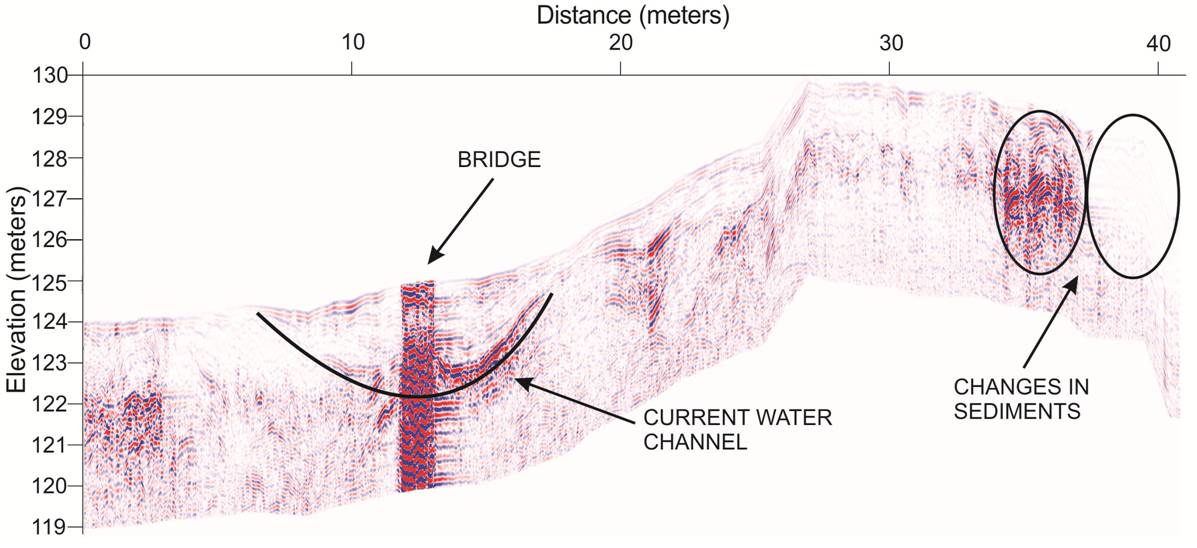|
The
Duck Lake site is located within the
Montezuma Wetland Complex. This site
has many glacial features visible at the
surface and through high resolution LIDAR
images. The GPR survey line followed
the contours of an esker (below) and crossed
onto a drumlin (right) at the end of the
road.
Three frequencies of antennae were used at
this location. The 100MHz antenna gave
the greatest depth penetration but the
poorest resolution. The 200MHz antenna
did not reach the same depth as the
lower frequency antenna, but had improved
resolution. The 400MHz antenna
provided a shallow penetration depth but
greatest resolution.
The images shown
on this page were produced by the 200MHz
antenna.
|
 Image of GPR profiles
crossing a drumlin (results from the 200MHz
antenna).
|